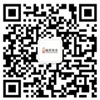关于这个未成年人辅修人体系统生理学将为人体内部运作提供广泛的背景知识,特别是心肺功能。将在环境和运动背景下讨论各个系统之间的相互作用。未成年人将提高专业技能,包括科学交流(报告写作、海报制作、口头陈述)、简单和更高级的数据统计分析、实验设计、招募和研究人类受试者时的健康和安全,以及准备资助研究计划. 对于选修与其他单元集(专业或辅修)共享单元的辅修课程的学生:为了使辅修课程在学术和毕业文件上得到认可,学生最多只能拥有一个单元在它们的单元集之间重叠。结果学生能够 (1) 回忆和整合关于器官功能及其功能如何协调的关键知识和概念;(2) 参照潜在的基本物理化学过程解释一系列生理现象;(3) 描述科学方法和研究设计的关键要素;(4) 使用一系列测量设备对人体和动物组织的生理现象进行测量;(5) 在生理学实验室环境和模拟科学会议中进行小团队合作;(6) 分析和解释来自一系列测量系统的生理数据;(7) 使用标准的科学格式和术语,以书面和口头形式清楚地传达科学事实和概念;(8) 搜索和批判性地分析研究文献。不相容
MJD-PHYGY生理学;
MJD-SPTSC运动科学;
MJD-SEHDM运动科学、运动与健康;
MJD-HSANP人文科学(解剖学和生理学);
MJD-BCNDM营养生物化学;
完成 PHYL2001 人体系统生理学的学生不需要参加 PHYL1001 生理学——人体如何工作?:
| 可用性 | 单位代码 | 单位名称 | 单位要求 |
| S2 | ANHB1102 | 人类生物学 II:做人 | 没有任何 |
| S1 | PHYL1001 | 生理学 – 人体如何运作? | 先决条件
报名参加 专业MJD-PHYGY生理学 不相容 PHYL2001人体系统生理 |
Students are able to (1) recall and integrate key knowledge and concepts about the function of organs and how their function is coordinated; (2) explain a range of physiological phenomena with reference to the underlying fundamental physicochemical processes; (3) describe the key elements of the scientific method and research design; (4) perform measurements of physiological phenomena from human subjects and animal tissue using a range of measurement equipment; (5) collaborate in small teams in a physiology laboratory setting and simulated scientific conference; (6) analyse and interpret physiological data derived from a range of measurement systems; (7) clearly communicate scientific facts and concepts in written and oral form, using standard scientific format and terminology; and (8) search and critically analyse research literature.




